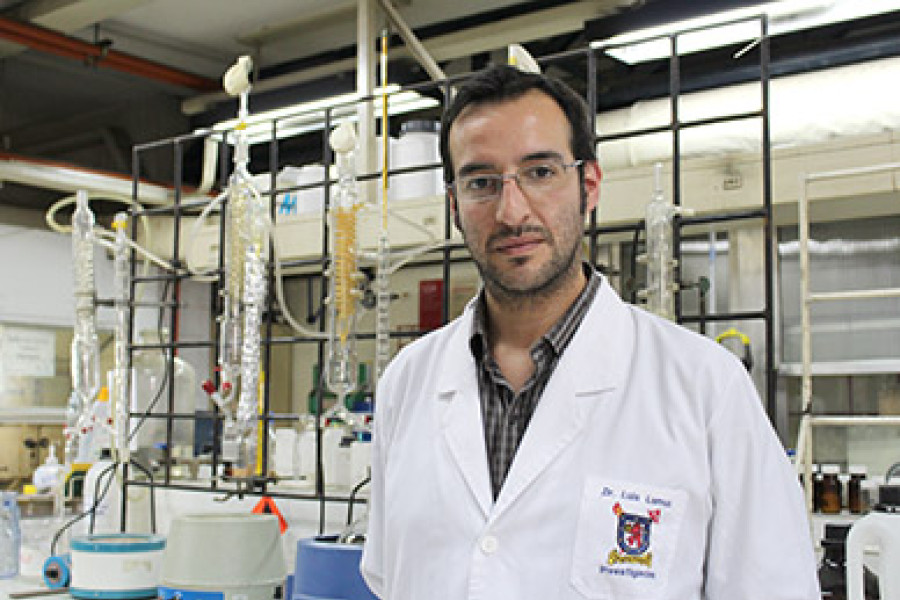Through a Fondecyt Initiation into Research Project, Dr. Luis Lemus, professor at the Faculty of Chemistry and Biology, has studied the interaction between new molecules called “helicates” and DNA, in order to evaluate the development of more specific drugs to fight cancer, avoiding the destructive effects of chemotherapy and radiotherapy.
According to Globocan, a worldwide survey on cancer conducted in 2012; there are 14.1 million new cases of this disease. At present, the most widely used treatments are chemotherapy and radiotherapy. Their purpose is to stop cancer spreading in the body by killing malignant cells that divide rapidly, one of the main properties of most cancer cells; however, in the process healthy cells are killed too: hair follicles, gastric mucosal cells, blood cells, etc. These side effects make these non-specific treatments very destructive:Something that could help to change this situation is the development of new compounds with a higher selectivity towards a specific biological target, the line of research of Dr. Luis Lemus, professor at the Faculty of Chemistry and Biology of Universidad de Santiago, who leads the Fondecyt* Initiation into Research Project named “Study on Helicates as DNA coordinators”. Its results could lead to developing more specific anticancer drugs.“These molecules (helicates) are able to bind to DNA strands by means of specific and strong interactions, modifying its structure, what prevents the genetic material from replicating inside the cell. What should be noticed is that cancer cells are the ones that produce the largest amount of DNA; therefore, these molecules could be a potential treatment against cancer progression,” professor Lemus stresses.To make progress in the treatment of this disease, first it is essential to deepen the knowledge about these compounds, which started to be studied less than 30 years ago. According to professor Lemus, nowadays there are a few groups in the world dedicated to study the use of helicates as anticancer drugs and the way in which this type of interaction affects the DNA structural modification has not been studied yet. This is the line of research that Dr. Lemus intends to develop.“Helicates are inorganic chiral molecules with a helical shape similar to the one of DNA, in which each molecule has a helical twist sense defined according to its structure. These positive molecules interact with negatives ones, in this case, DNA. After this electrostatic attraction occurs, the DNA is able to recognize and selectively establish secondary interactions with helicates with better twist sense than others. Here, documenting this phenomenon is essential.This project will be implemented in two stages. First, by performing the structural study and synthesis of different types of helicates with different transition metals; and second, by doing DNA tests to evaluate the affinity between the molecules and DNA, and the extent to which helicates could modify the latter.Regarding the projections of the study, professor Lemus says that in the future, “it would be ideal to evaluate these compounds against cancer cells and therefore, to prove if they are able to kill these cells. However, today we are trying to build a very basic knowledge, because it does not exist. Acquiring this knowledge will be very helpful for us and for other groups.”A field to exploreCreating a research group dedicated to study inorganic complexes for biological applications is among the goals that Dr. Lemus has for this project. According to the academic, this area is little developed in Chile, so this study could start a new line of research both at the University and in the country.“We have the facilities, equipment and experience in synthesis to meet the initial goals of this project; but we also need help from other researchers who could contribute with their knowledge in biology to make the study more valuable. This project is the first step for the expectations that we have as a group,” Dr. Lemus says.*Fondecyt: National Fund for Scientific and Technological Development.Translated by Marcela Contreras


